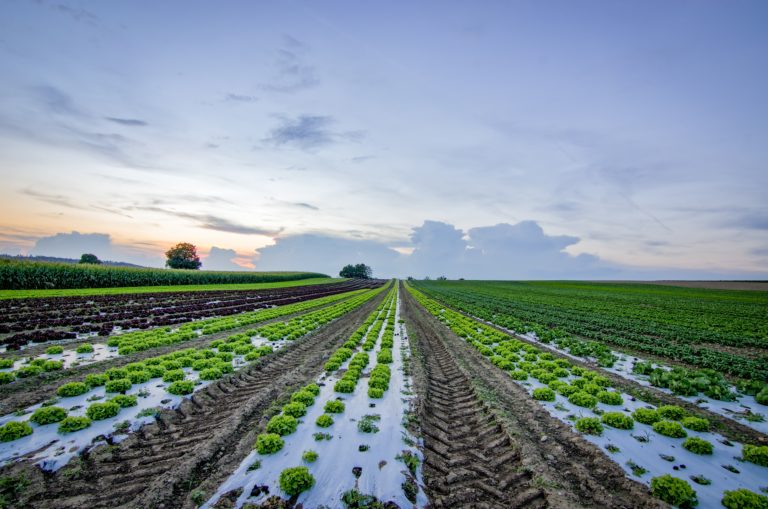Eco-Farming: The Sustainable and Environmentally Friendly Alternative to Traditional Farming
Eco-farming is the process of growing crops and raising livestock in a manner that is both sustainable and environmentally friendly. In the past few years, the idea of “eco-farming” has become more popular as people worry about how traditional farming methods affect the environment.
Eco farming involves the use of natural fertilizers and pesticides, crop rotation, and the preservation of soil quality.
In this article, we will discuss the benefits of eco-farming, the methods used in eco-farming, and its impact on the environment.
The Benefits of Eco-Farming
Eco-farming has several advantages, both for the environment and for those who practice it. One of the main benefits of eco-farming is the preservation of soil quality.
Soil is an essential component of farming, and its degradation can lead to reduced crop yields and the need for costly soil remediation efforts. Ecological farming tries to keep the soil as healthy as possible by using natural fertilizers, reducing the amount of tilling, and rotating crops.
Another benefit of eco-farming is the reduction of pesticide and fertilizer use. Traditional farming methods often rely on the use of synthetic pesticides and fertilizers, which can be harmful to the environment and lead to the development of pesticide-resistant pests.
Eco farming, on the other hand, uses things like compost and manure as fertilizers and beneficial insects and crop rotation to keep pests away.
Eco-farming can also lead to a reduction in greenhouse gas emissions. Traditional farming methods rely heavily on the use of fossil fuels, such as gasoline and diesel, for farm machinery and transportation. Eco farming, on the other hand, emphasizes the use of sustainable energy sources and reduced energy consumption.

Methods of Eco-Farming
There are several methods used in eco-farming, each with its own unique benefits. These methods include organic farming, biodynamic farming, and permaculture.
The most well-known type of eco-farming is organic farming. Organic farming relies on the use of natural fertilizers, such as compost and manure, and natural pest control methods, such as the use of beneficial insects and crop rotation. Organic farming also prohibits the use of synthetic pesticides and fertilizers.
Biodynamic farming is a method of eco-farming that takes a holistic approach to farming. Biodynamic farming involves the use of natural fertilizers and pest control methods as well as the use of lunar and astrological cycles to determine planting and harvesting times.
Biodynamic farming also focuses on using a wide range of plants and animals and protecting natural habitats.
Permaculture is a method of eco-farming that emphasizes the creation of sustainable, self-sufficient ecosystems. Permaculture involves the use of diverse crops and livestock, as well as their integration into the same space.
Permaculture also involves making natural water and energy systems and keeping natural habitats in good shape.
The Impact of Eco-Farming on the Environment
Eco-farming can have a big effect on the environment, both by making traditional farming methods less harmful and by helping the environment stay healthy in the long run.
One of the main environmental benefits of eco-farming is the reduction of pesticide and fertilizer use. Synthetic pesticides and fertilizers can be bad for the environment and lead to pests that can’t be killed by pesticides.
On the other hand, eco-farming relies on natural fertilizers and pest control methods that are less harmful to the environment.
Eco-farming can also reduce soil erosion and degradation. Traditional farming methods often involve heavy tillage, which can lead to soil erosion and degradation. Eco farming, on the other hand, emphasizes reduced tillage, the use of cover crops, and the preservation of soil quality.
Eco-farming can also lead to a reduction in greenhouse gas emissions. Traditional farming methods often rely on the use of fossil fuels, such as gasoline and diesel, for farm machinery and transportation.
Eco farming, on the other hand, emphasizes the use of sustainable energy sources and reduced energy consumption. For example, farmers can use solar or wind power to generate electricity and can also use electric or hybrid vehicles for transportation.
Another impact of eco-farming on the environment is the preservation of biodiversity. Traditional farming methods often involve the use of monoculture, which can lead to a loss of biodiversity.
On the other hand, eco-farming puts an emphasis on using a wide range of crops and animals, which can help protect natural habitats and biodiversity.
Eco-farming can also have positive effects on water quality. Traditional farming methods often involve the use of synthetic fertilizers and pesticides, which can leach into groundwater and surface water.
Eco-farming, on the other hand, relies on natural fertilizers and pest control methods, which can reduce the risk of water pollution.
Examples of Eco Farming
There are many examples of eco-farming around the world. One example is the Ecological Land Co-operative in the United Kingdom. The Ecological Land Co-operative is a social enterprise that purchases and leases land for the purpose of eco-farming. The organization works with small-scale farmers to promote sustainable agriculture and the preservation of natural habitats.
Another example of eco-farming is the Kibbutz Lotan Eco Village in Israel. Kibbutz Lotan Eco Village is a farming and living community that practices permaculture and other forms of eco-farming. The community emphasizes sustainable living and promotes the use of renewable energy sources and the reduction of waste.
In India, the Zero Budget Natural Farming (ZBNF) movement has gained popularity in recent years. ZBNF is a method of eco farming that relies on natural fertilizers and pest control methods, as well as traditional knowledge and practices.
The movement has gotten support from the Indian government, which has started a number of programs to encourage farmers to use Zero Budget Natural Farming (ZBNF) .

Conclusion
Eco-farming is a sustainable and environmentally friendly approach to farming that has gained popularity in recent years. Ecological farming emphasizes the use of natural fertilizers and pest control methods, the preservation of soil health, and the reduction of greenhouse gas emissions into the atmosphere.
Eco-farming can help the environment by making traditional farming methods less harmful and by promoting environmental sustainability.
There are many examples of eco-farming around the world, and the adoption of eco-farming practices is an important step towards a more sustainable future.
Also Read :-
Regenerative Agriculture: A Sustainable Solution for a Healthier Planet







